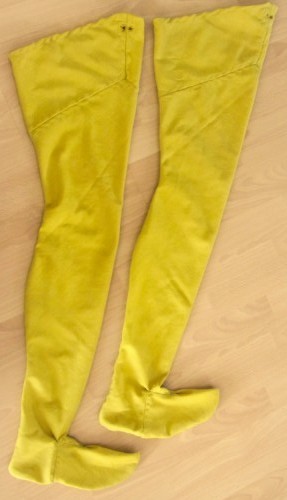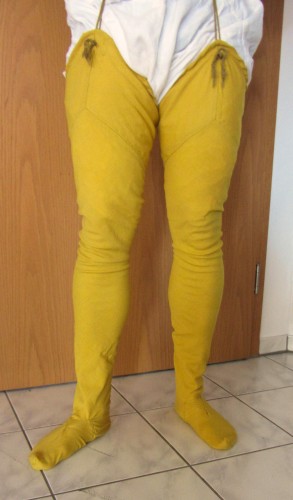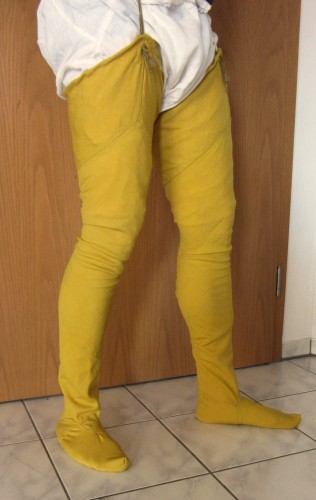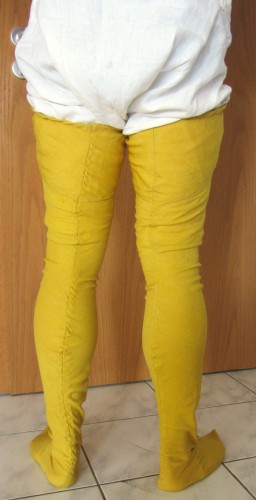Since I am currently moving all my equipment from chemical to vegetable dyed fabrics, it was time to exchange my old Hoses with new ones.
The old pair of Hoses, shown in the following figure, were made of chemically dyed gray-mottled 2/2-woolen twill.
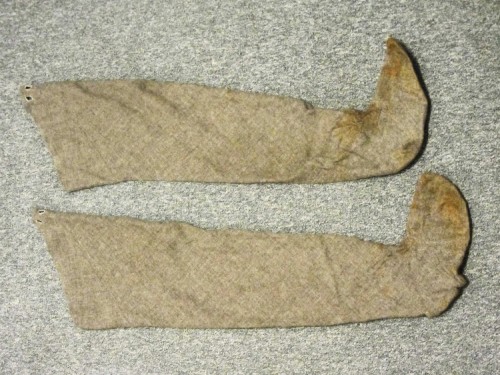
My old pair of Hoses made of chemical dyed 2/2 woolen twill
For these the surviving Hoses from the grave of the Archbishop of Bremen, dated to the first half of the 13th century, served as a model. This pair are in a good state of preservation and consists of 4 parts:
- a long main body for the leg
- two extensions on the thigh
- the foot part
The actual leg is rather straight cut with a v-shaped tongue at the lower end and the two almost rectangular heel parts left and right of it. At the upper end, two extensions including the nest holes are are sewn to the main part. The foot part is of semicircular shape with a small v-shaped incision at the straight upper edge.
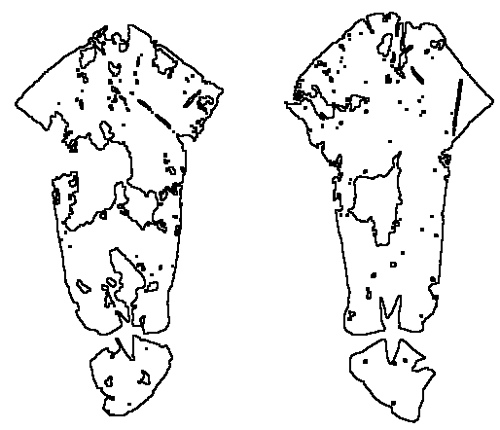
Outline of the surviving Hoses of the archbishop of Bremen, dated to the first half of the 13th century
For the new pair, my wife has dyed a light wool-twill with birch leaves. This time I wanted to achieve a better fit than with the old ones. So the limb was first cut out after the same cutting pattern and then staked directly onto the leg. Especially in the area of the knees and the transition to the heel, a few attempts were necessary to achieve a good fit without the Hoses being too tight.
All parts were sewn together by backstitching and the hem was folded double on both sides and then fixed by overstitching. I used (mostly) hand - spun yarns, which were also dyed with birch leaves.
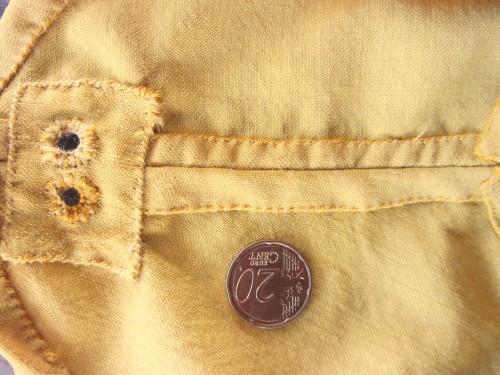
Detail of the seam. The coin is used to illustrate the small stitching width of 2-3mm
On the upper side of the fabric the overstitching is almost invisible, since only a single thread is struck. Thus, only small point-shaped deformations appear in the material. These disappear with time by wearing, or after ironing completely.
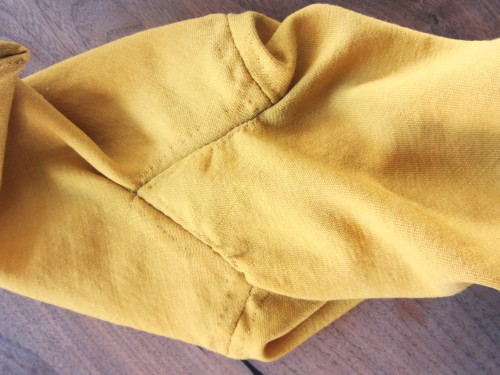
Upper side of the seam with small point-shaped deformations due to the overstitching
Due to the tight fit on the knee, the leggings hold very well. Even without attaching them to the Braies. And here is the result of the work.
 Adalbert Shouster
Adalbert Shouster


